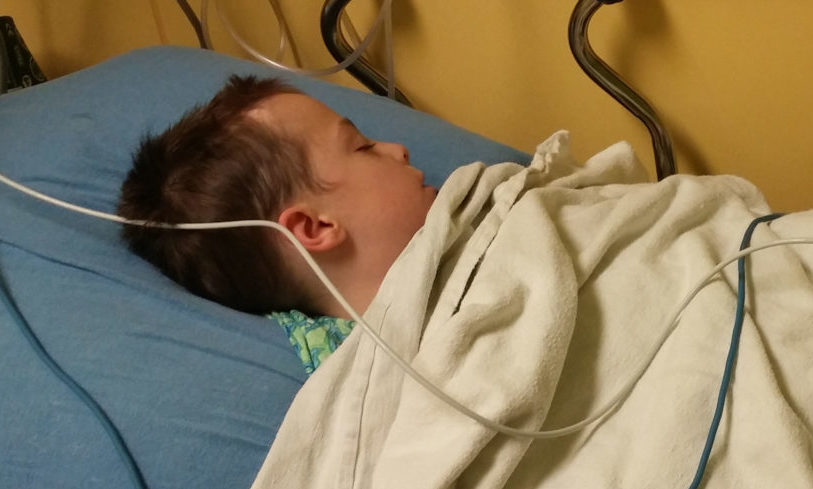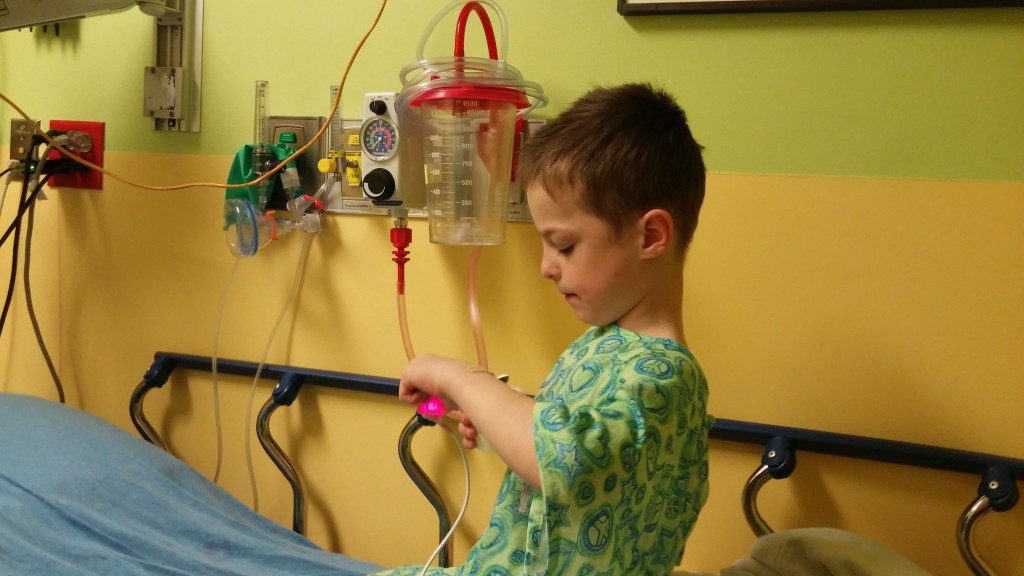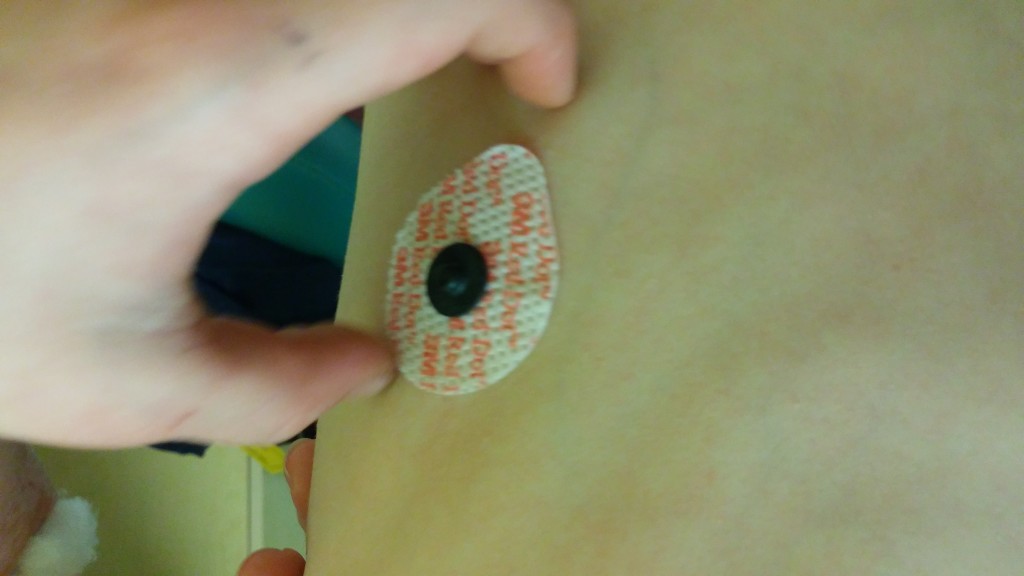Yesterday was not what people in the living business would call “a good day.” It started out normal enough, meaning that I stepped in a puddle of honey that Finley had sneaked into the carpet at some point in the last twenty four hours. So far, so good.
Work was normal enough, too, which at this time of year means hours and hours of client projects to sort through.
Then I got a call. Amy was frantic. The paramedics were at the house, carting Finley away in an ambulance. He was in the middle of a seizure, one that would end up lasting about fifteen minutes (update: after looking through the medical logs, the seizure was closure to 30 minutes) before dose after dose of anti-seizure medication finally calmed it down.
I ran out the door, leaving everything but my wallet, keys and phone, and barely having time to yell out an explanation to my new coworkers.
After that I made one of the worst drives I’ve had in my life, and I’ve suffered through more than a few worrying trips. I didn’t know what had happened, I didn’t know what state Finley would be when I got to the hospital. Even worse, that morning a played out like a bad cliché, with me getting mad at Finley about the honey before stomping out the door, then worrying as I drove away that if one of us died that day, it would be the last interaction we ever have.
I even ran back in the house to give him a hug, but he was already back in bed. I chided myself for such a dumb thought and left.
Now, racing towards the hospital as fast as I could without risking an accident or a ticket, that thought kept cycling through my head.
At the hospital, I found Finley surrounded by doctors and nurses, lying on his hospital bed, totally dead to the world. Thankfully, though, alive.
“He has a wound on the back of his neck,” one of the nurses announced, worry creeping into her voice. “An impact sight.”
Amy peered around the huddle of professionals. “Actually, that’s marker.”
They didn’t find any wounds. They stabilized him, sedated him, and left.
We went through hours of watching, waiting to find out what damage had been done. They carted him off to a CT scanner to shoot radiation into his brain and look for tumor or bleeds. Both turned out negative.
We waited while Finley unconsciously moved his left arm and leg, his eyes fluttering and staring to the left. His right side remained stubbornly still, something the doctor tried to casually note but which didn’t get past AMy.
My sister-in-law checked in on us. She noted how many hospital trips had been made between her, her husband (Amy’s brother), Amy, our kids, and my in laws. None of them, if you were to meet them on the street, would you think to have any medical issues at all. On her side of the family, everyone has been more or less fine. On my side of the family, every has been more or less fine. We, however, the small group of us on Amy’s side of the family have been reminded again and again that, when it comes to medical bets, the best gamble we could make would be to spring for the more expensive medical insurance.
Our family, neighbors, and friends were there for us, helping do what they could. More showed up or called or offered support throughout the day, offering much needed relief.
Eventually, Finley woke up. He was fine. Totally and completely fine, although a little bit dazed.
“Finley, do you know where you are?” I asked him as he started to stir.
“Yes,” he replied in a horse whisper.
“Where?” I pressed.
“Here.”
Technically true, I had to give him that. It was like he came from a family of accountants.
As he woke more, I asked him if he remembered what happened that day.
“Do you remember getting up this morning?”
“Yeah.”
“Do you remember feeling sick to your stomach?”
“Yeah.”
“Do you remember riding in the ambulance?”
A mischievous grin crossed over his face. “No.” Then he paused. “I rode in an ambulance?”
Even after we explained why he was there and what it all meant, that still seemed to be the most memorable part of his trip: that he had ridden in an ambulance but he couldn’t remember it.
We were there all day, caught in the Hospital Time, and, unfortunately, never getting any definitive answers.
When Finley was born, he had severe intraventricular hemorrhaging, or brain bleeds, that had about a seventy five percent chance of leaving him permanently disabled. His pediatric neurologist watched him closely for over a year, using MRIs, CT Scans, and an EEG test. All showed that he had recovered remarkably well.
Now, almost exactly six years after his traumatic birth, a new neurologist went back and looked at his old tests, wondering if there weren’t small signs of epilepsy there all along. They just took longer than normal to manifest.
We’re not exactly sure where that leaves us. Finley has been prescribed seizure meds that he may or may not have to take for the rest of his life. He’s been advised not to drive in the meantime. Or take too many alcoholic drinks. Or operate heavy machinery. All serious concerns for a six year old.
Just another thing to watch, another thing that we never expected to have to deal with. Yet still so much better than it could have been.


